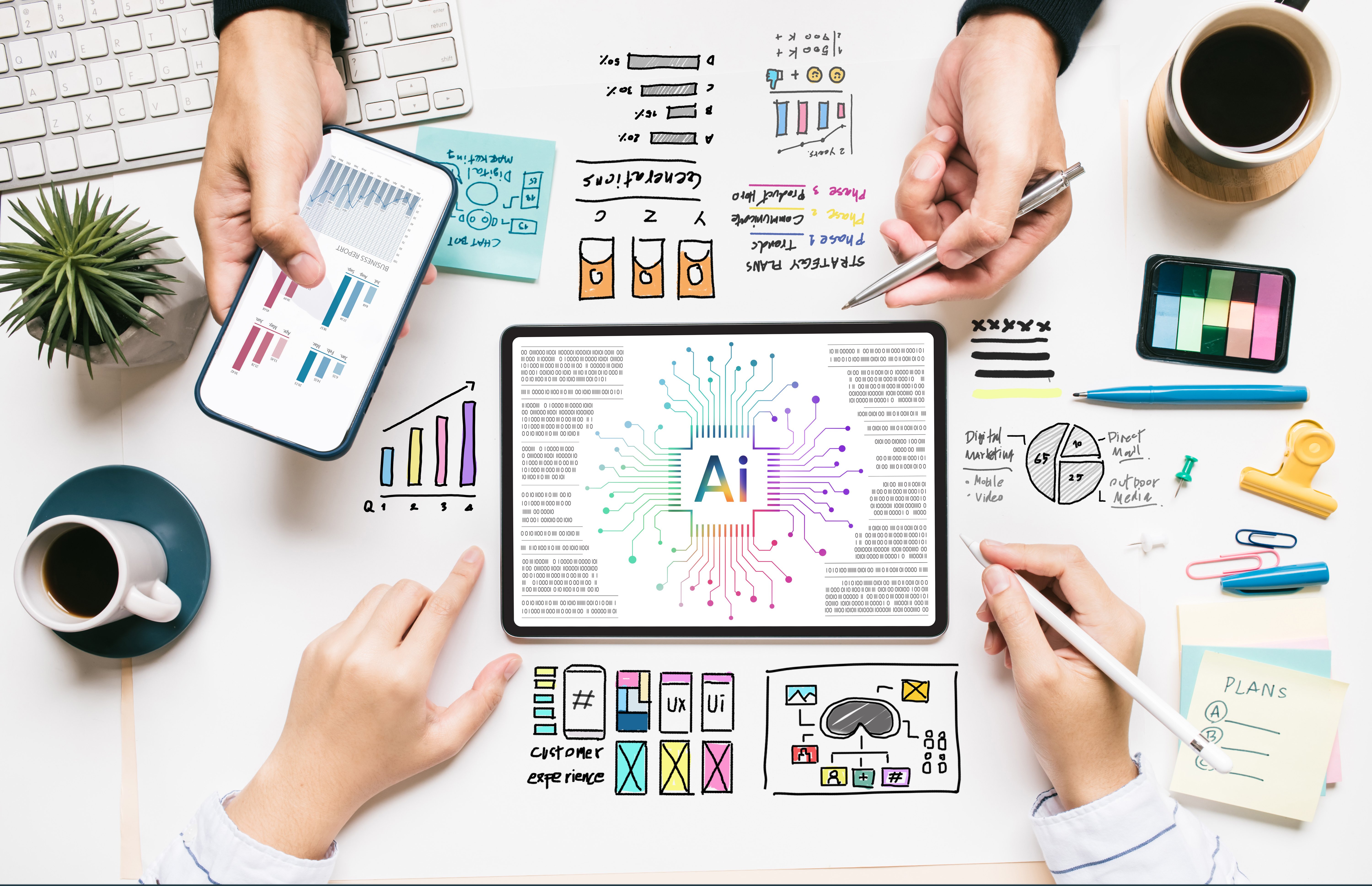“To alcohol! The cause of, and solution to, all of life’s problems.” – Homer Simpson
At this moment in time, you could easily replace “alcohol” with “AI” in the above quote by legendary philosopher Homer Simpson. It would still ring true.
That’s because the capabilities of artificial intelligence at the moment are astonishing. Rapid advancements have created AI tools that can handle many time-consuming tasks of day-to-day work. These solutions have grown so powerful that many people fear they will cause widespread employment challenges for humans. They’ve become far more than just “tools.”
Generative AI models such as ChatGPT and Google Bard can create well-written content in any style within seconds. In the world of images and videos, models such as DALL-E and Synthesia can generate realistic multimedia results from a simple text input.
The powers of AI have grown so impressive that a majority of Americans fear that AI may threaten their jobs. These fears are especially relevant in light of Worldcom’s recent special report: Executive teams are planning to invest heavily in AI over the coming years.
As we move into the era of AI, many brands are wrestling with questions about how to use AI in ethical and effective ways. How much is too much? How can our organization use AI in a way that helps us, but doesn’t impact our workforce in an overly negative way? In the world of communications, these worries are particularly pronounced – but they’re also nothing new.
AI Has Already Impacted Communications for Years
If you’re reading this, your job likely has something to do with communications in some shape or form. The intersection of AI and communications is particularly fascinating on a fundamental level: At its core, communication is about connecting with others on a human level, and if an AI model is generating that communication, can it really connect on a human level?
The truth of the matter is, from customer service to interpersonal communication, AI has handled many critical communications functions for years. There are historical lessons to be learned from AI-driven communications, and they suggest that human connection is still extremely important.
On the business side, chatbots, automated voice systems, and automated e-mail responses are examples of AI applications that have existed for years. For the most part, they have replaced tedious and repetitive customer service and administrative tasks, but they have not eliminated the need for human customer service agents, subject-matter experts, and personal assistants.
That’s because people, by and large, dislike interacting with these automated systems. A recent survey by contact-center provider UJET found that 80 percent of respondents grew frustrated when interacting with a chatbot, and more than half of them said that speaking to a human being provided the best experience.
It’s a reminder that while AI can provide time- and cost-saving solutions for many businesses, it also provides a sub-par experience for customers and your workforce. As AI grows more powerful and integrated into communications tasks in different ways, it’s essential to ensure that the end result is an improved experience for your customers – and improved execution for your communications team.
Five Ways AI Can Help Your Communications Team (Without Replacing Them)
Sure, a generative AI model such as ChatGPT can create marketing copy and a press release in a matter of seconds. However, that falls into the realm of “replacing” human connection with automated scripts. Without the human element, connecting with your audiences is very likely to fall flat or seem “a little off.”
Instead, think about ways that AI can augment your communications team’s area of expertise: Written, verbal, and visual communication that connects with others at a human level.
The best AI solutions for your team can work behind the scenes, finding patterns in vast amounts of data and providing insights your people can act upon – all while leaving the actual communication to experts who know how to connect with audiences.
Audience and persona targeting: Just as you might communicate differently with a lifelong friend, a family member, an authority figure, or a child, your communications team doesn’t have a “one size fits all’ approach. Before they create anything, they first must understand your brand’s key audiences inside-out. AI tools are particularly good at parsing through vast and disparate sources of data, identifying patterns, trends, and interests that tie them together. When these powers are applied to your brand’s audience segments, they can help your communications team craft compelling messaging that resonates with specific demographics on a personal level.
Market research tools: Market research helps inform that fundamental understanding of your audience, and AI has made it much easier to unlock market insights. Many of today’s AI-driven market research tools are powered by OpenAI, helping communications and marketing teams conduct user experience testing, identify audience demographics, analyze customer feedback, track competitor activity, and more. All of these capabilities are incredibly beneficial to communications and marketing professionals, and AI is helping them reduce the time and manpower needed to uncover valuable insights.
Reputation management and crisis communications: Media tracking and social listening platforms frequently have AI-powered sentiment analysis features that gauge whether posts about your brand are positive, negative, or neutral. These tools can act as a “fire alarm” for your teams in case there is an uptick in negative posts about your brand in the media and on social platforms. In the worst-case scenarios, negative coverage on social and traditional media may trigger the need to put a crisis communications plan into action. Your communications team – and its expert partners – will have that plan already laid out and tested, but AI-driven media tracking and social listening tools can help them decide when to set those plans in motion.
Media strategy and storyline insights: In addition to overarching brand messaging and key media storylines, the fast-paced news cycle of today’s world provides opportunities for your company to “ride the wave” of related coverage. AI-driven tools can help your communications team stay informed of breaking news items and trending topics on social media, all of which provide opportunities for your brand to gain coverage. On a grander scale, AI-powered tools such as Google Analytics can help your team keep track of your own web and mobile app traffic. Read our deep dive on how to create a successful media strategy in the modern world to learn how these tools can help you assess the impact of earned, owned, and paid media campaigns.
Transcribing and documenting audio interviews: As any journalist can tell you, transcribing an interview by hand often takes longer than writing a full news story. It’s the definition of a tedious process. When they’re building out your brand’s media strategy, media storylines, and core brand messaging, your communications team may be conducting extensive interviews with your leadership team and other key stakeholders. Thankfully, there are several AI-powered speech-to-text solutions that will ensure they don’t spend hours transcribing that 45-minute interview with the CEO. It may seem like a small thing, but an accurate audio-to-text transcription solution can save a ton of time while keeping the transcript accurate and immediately accessible in written form.
The Ultimate Combination of Human and Artificial Intelligence
At Airfoil, we’ve used AI-powered tools to help our clients identify growth opportunities, target new audiences, and analyze media strategy for years. Those are just the tools of the trade, and we understand what it takes to succeed at the human level. Our cross-functional expertise, vast knowledge of the PR and marketing landscape, and strong relationships with reporters are the keys to our success. If you’re looking for a strategic partner who knows how to empower – not replace – your people with the right technological tools, let’s talk.




